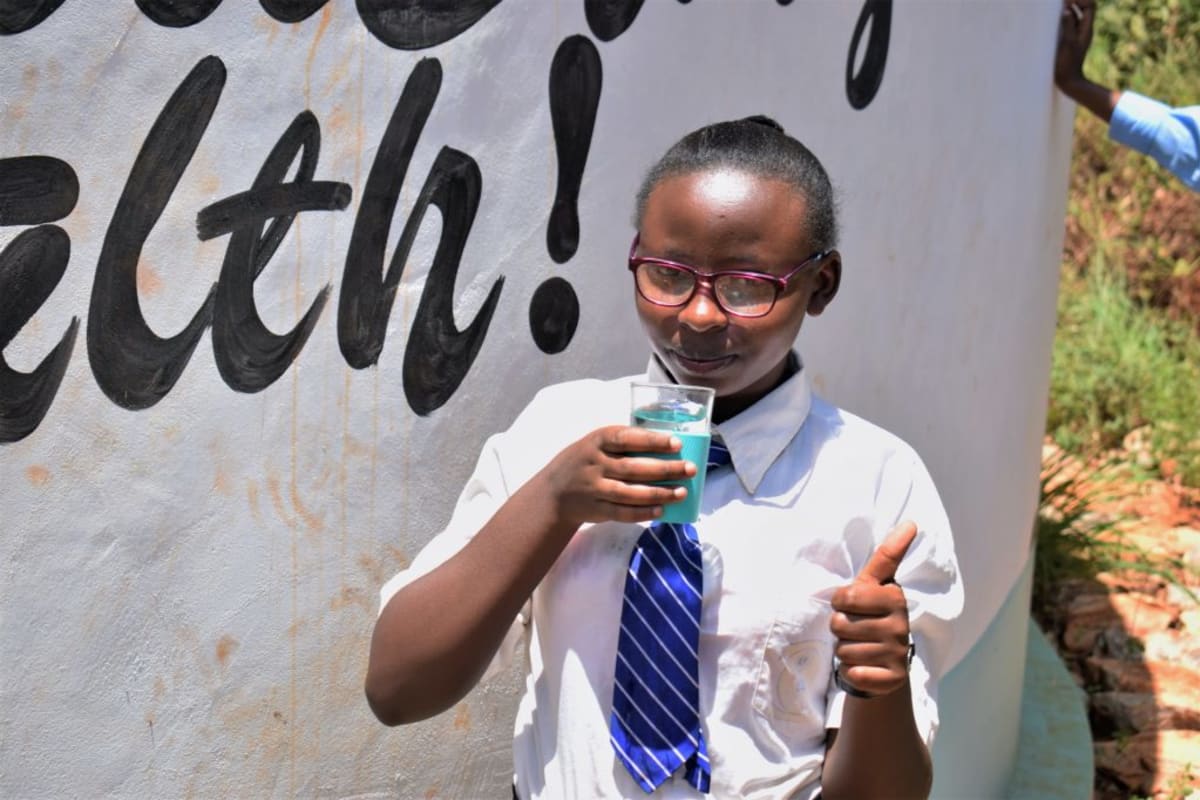Kaani Lions Secondary School is an all girls' school located in Kaani Community of Machakos Community, Kenya. It is a peaceful rural area that's relatively flat, covered with beautiful homes. This is because Kaani used to be a big producer of coffee, but the crop was abandoned as the selling price plummeted. Now, a lot of people commute to Nairobi on a daily basis.
The school itself was started in 1989 by the Machakos District Education Board. It currently has no sponsor but has grown to its large size through the support of parents. There are 461 students, many of which board overnight. They attend math, physics, agriculture, history, language, and many other types of classes in the school's 13 classrooms.
Students wake up at 4:30am and study until 6 o'clock breakfast. Studies resume until morning assembly, after which there are classes until lunch. Afternoon classes go until games at 4pm, and then there are evening studies and dinner.
The school is affiliated with Masola Kaani Self-Help Group. By virtue of them being either parents or grandparents of pupils at the school, they clearly understand the water-related challenges faced on a daily basis. It is for this reason that they proposed the construction of a rainwater catchment tank.
Water Situation
The school is connected to a pipeline that often breaks down. When no water comes out of the tap, school administration has to order boozers to bring water in from outside. These boozers are large trucks that transport water from Machakos Town. The school has to pay quite a bit for these boozers, but also has to cover the cost of the water used from the pipeline.
The school has several plastic tanks that they store this water in. One larger 12,000-liter tank is a permanent structure made of concrete. This concrete tank is connected to the pipeline.
Principal Marysella James said, "My students do not do personal washing regularly due to water scarcity, as rationing has greatly impacted water-intensive activities in the school. The levels of hygiene in this school are low due to insufficient supply. Cleaning is irregular, and it is very expensive to buy water. Sometimes boozers are very expensive and we resort to using oxen carts..."
Sanitation Situation
As Principal James said above, sanitation and hygiene have really been sacrificed so the girls have enough water for drinking. There are 26 latrines for the 461 girls, none of which are kept clean enough for comfort. There's not enough water, so they're only swept on a daily basis.
There are no handwashing stations nor would there be the water to use them. But there aren't other sanitation tools like dish racks, either.
What we can do:
Training
Students and staff will be trained for one day. Those in attendance will form a school health club that will promote good hygiene and sanitation practices both at school and at home. They will learn all of the steps to proper hand-washing, how to treat water, and how to keep their environment clean. The school will also be taught how to best oversee and maintain their new rainwater catchment tank and hand-washing stations.
Handwashing Stations
Three handwashing stations will be delivered at the project’s completion. These are 1,000-liter plastic tanks fitted with four taps. The health club and school management will be responsible for making sure tanks are filled with water and that a cleaning agent such as soap or ash is available.
Rainwater Catchment Tank
We will build a 104,000-liter rainwater catchment tank for this school. This water will benefit the students, teachers, and supplementary staff. Parents will mobilize the materials needed for construction, such as sand and stone. They will also lend some strong arms to help with the actual construction.
The huge capacity of this tank makes the others look tiny in comparison; 104,000 liters should be enough water to carry students and staff through the entire dry season. As soon as the tank has time to cure, it can begin to collect rainwater for drinking, cooking, and cleaning!
This project is a part of our shared program with Africa Sand Dam Foundation. Our team is pleased to provide the reports for this project (edited for clarity) thanks to the hard work of our friends in Kenya.

 Rainwater Catchment
Rainwater Catchment
 Rehabilitation Project
Rehabilitation Project



























